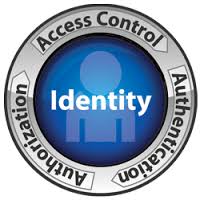3 Reasons to Consider Replacing Active Directory
 Active Directory was designed for on-premise local and enterprise networks. As the use of cloud continues to move forward, Active Directory has not adapted as quickly as needed to provided robust, unified, identity management. Here are three (3) reasons to consider replacing (or augmenting) Active Directory.
Active Directory was designed for on-premise local and enterprise networks. As the use of cloud continues to move forward, Active Directory has not adapted as quickly as needed to provided robust, unified, identity management. Here are three (3) reasons to consider replacing (or augmenting) Active Directory.
1) Active Directory is not “Cloud Ready”
According to a survey by security firm BetterCloud, almost 50% of SMBs will be all cloud by 2020, up from 15% today. Even SMBs are using more than one cloud service.
Keeping Active Directory means setting up sync services and other tools across multiple cloud platforms — a complex and expensive solution.
2) Users are Mobile and Working Remotely
Global Workplace Statistics reports that between 20% and 25% of employees already work remotely on a semi-regular or regular basis. And, 50% of employees hold jobs that are compatible with remote work. Since 2005, remote work has grown 103% and continues to grow.
Keeping Active Directory means requiring employees to log into the corporate domain when working remotely, typically by VPN. This is slow and cumbersome for users, and expensive to setup and maintain.
3) The Windows-Only World is Gone
Macs are normal part of the ecosystem; Computerworld reports that 90% of Fortune 500 companies officially support Apple desktops, laptops, and tablets. Chrome devices are starting to move from education to the business market. And, most employees work at least some of their day on smartphones or tablets; iOS and Android are now business operation systems.
Keeping Active Directory means bridging identity management and policies between network operating systems or adding third party products to properly manage users and devices.
The good news is that you do not need to live with the cloud-related limitations of Active Directory. You can run directory services, manage identities, and control access to devices (even when off-network) with cloud-based directory services. These services simply administration and provide a single system of record for user identities.
Want to learn more or give it a try? Contact us and we will show you how.

